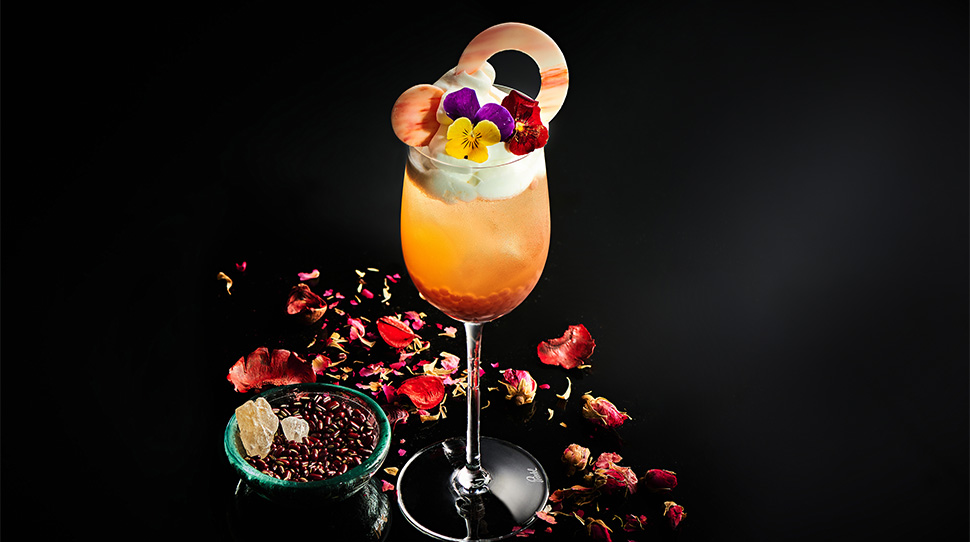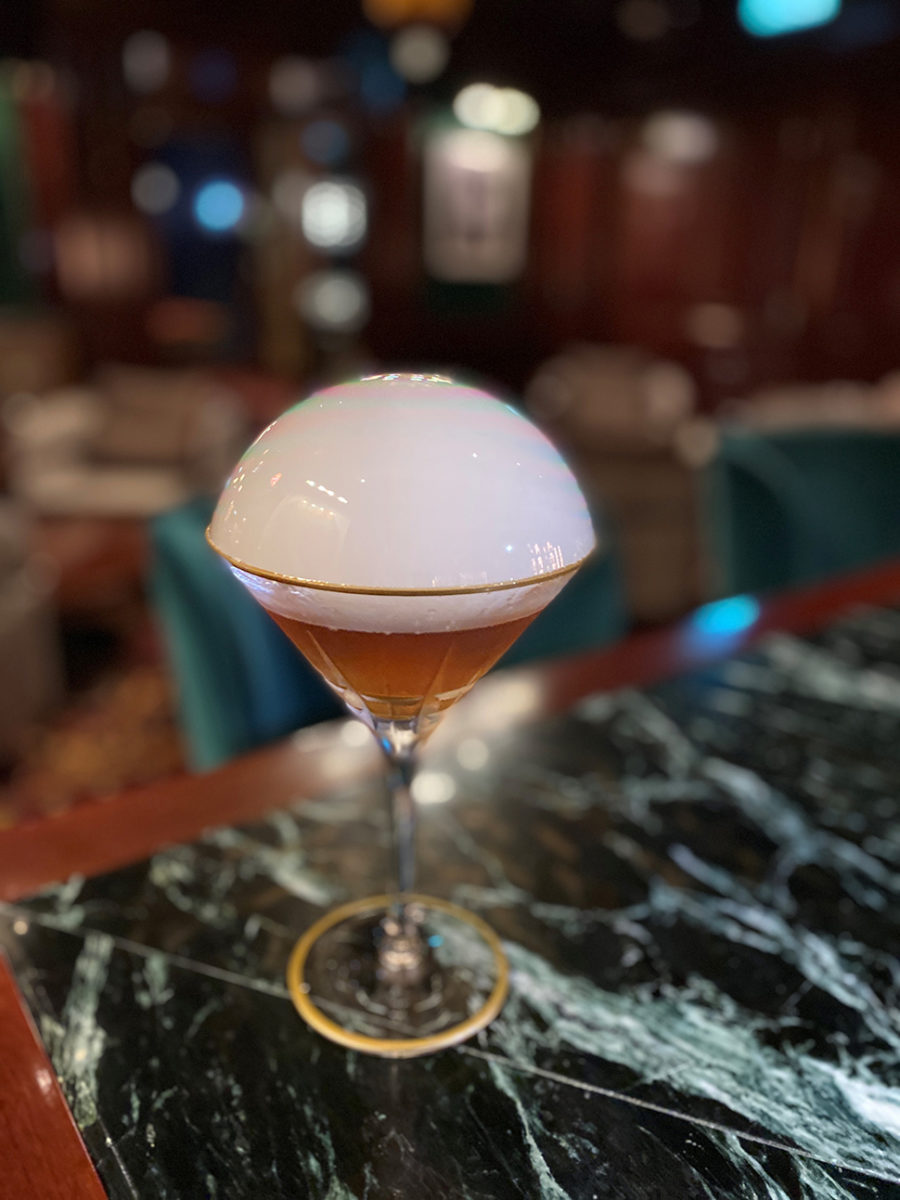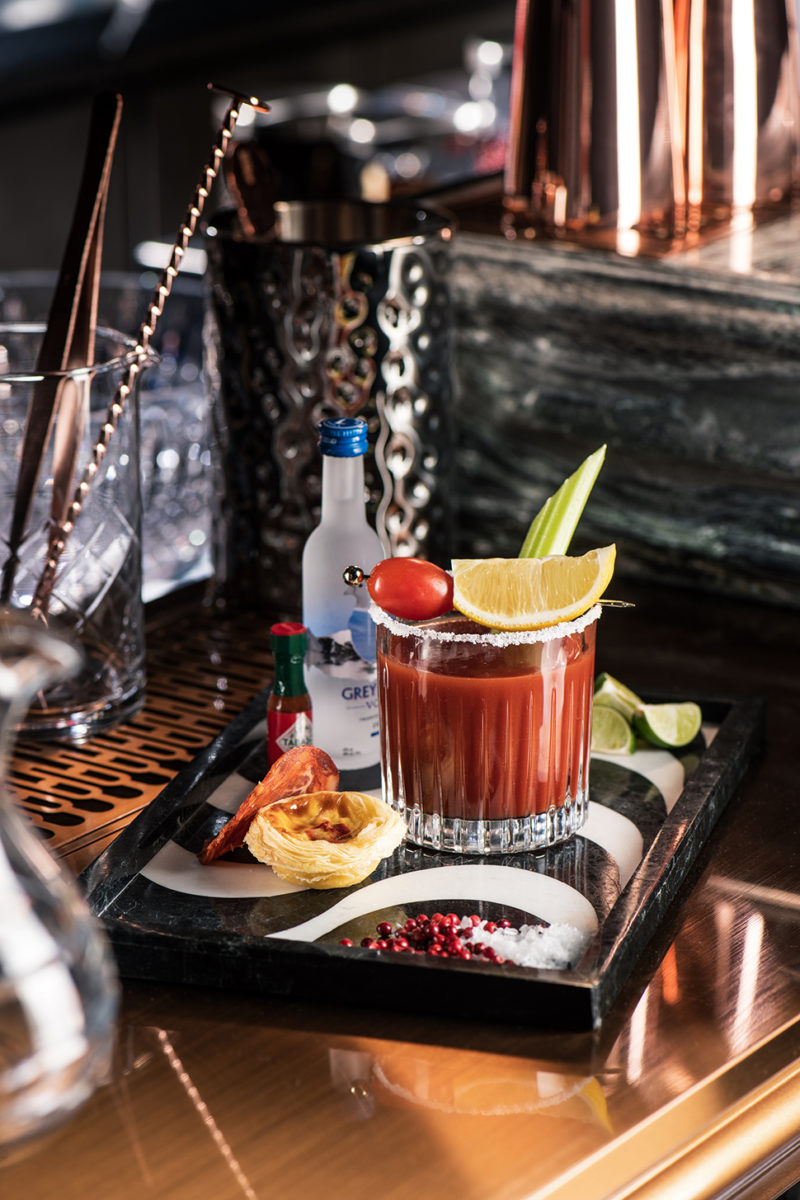

When you think of Macau, massive casinos, incredible shopping and sprawling urban resorts likely come to mind. But the city also offers a fascinating cultural legacy as the first and last European colony in Asia. Thanks to more than 400 years as a Portuguese trade port, the city served as an essential entrepôt for spices, ceramics and goods flowing from Asia to Europe.
And while its golden age of sea trade may be in the rearview, Macau is full of noteworthy cultural remnants: a fascinating mix of Chinese and Portuguese architecture, diverse communities, colorful festivals, crafts, music and culinary experiences that brings together the best of East and West.
Not only can you experience the city’s past on foot, but you may also encounter it in unexpected places, like a martini glass or a margarita saucer. Inspired by Macau’s unique role in history, an increasing number of cocktail bars are telling these stories through the lens of mixology. From a blood mary layered with symbolism to a playful spin on a local red bean ice drink, here are a few of our favorite tipples celebrating Macau’s heritage:
Macau Red Bean Fleecy and Complextini
The Ritz-Carlton Bar & Lounge soars over the Cotai Strip from its lofty perch on the 51st floor of this ultra-luxurious Macau hotel. But dramatic views are just the beginning: This bar has it all, from live music to comfortable seating, an inviting atmosphere, delicious tapas, more than 120 types of gins and a mix of classic and creative cocktails.
Just recently, The Ritz-Carlton, Macau’s bar launched a new “Refined Essences” cocktail menu that’s overflowing with Macau’s culinary culture. Try the Complextini, a vodka martini that borrows from Cantonese double-boiled soup with salty conpoy (dried scallop), morel mushrooms and aromatic shiso leaf for an earthy, umami result.
For something playful, the Macau Red Bean Fleecy promises a particularly photogenic drink. Made with Earl Grey-infused gin, coconut milk, rose and adzuki red beans, this creative tipple riffs off red bean ice drinks — a traditional Cantonese dessert that’s ubiquitous in local diners.

The Power of the Throne
Channeling British vibes, The Residence is exclusively available to guests staying at The Londoner Hotel on the Cotai Strip. The Residence will effectively transport you to a contemporary British townhouse thanks to the sophisticated interiors by Hong Kong-based Alan Chan Design Company. In this residential-style take on an executive lounge, you can enjoy meals, snacks, afternoon tea and an array of cocktails.
Among them is the Power of the Throne, made with Glenfiddich 12-year-old whisky, housemade lapsang souchong tea cordial, Passadouro Reserva tawny port wine and a dash of Angostura bitters. Served up in a martini glass, the drink comes with an orange twist and a plume of smoke for aromatics and drama.
The creation honors Macau history on several levels, starting with the tea cordial. After the Portuguese set up a trading port in Macau in the 1500s, they had direct access to Chinese goods and ingredients, including tea leaves, via Guangzhou, which was then known as Canton. It’s believed that Portuguese Princess Catherine of Braganza, who drank tea daily for energy and enjoyment, introduced the drink to the royal English court when she married King Charles II in the 17th century. The cocktail contains smoky, savory lapsang souchong tea, as well as Portuguese port as a nod to this lesser-known history.
“To commemorate the historic handover of Macau [from Portuguese to Chinese administration in 1999] and taking inspiration from the eclectic Macanese culinary culture, we created Power of Throne,” says Frank Hu, head of beverage at The Residence, who created the drink. “The Portuguese fortified wine is a highlight, giving a perfect balance of acidity, floral aromas and fruity notes.”

Maria do Leste
Love bloody marys? You can thank The St. Regis for this delicious drink. The tipple emerged in 1934 when celebrated barman Fernand Petiot introduced the first bloody mary at The St. Regis New York’s famed King Cole Bar. It’s since become a classic cocktail with legions of fans, and the hotel has introduced a localized version at each of its hotels around the world.
The St. Regis Macao serves up an iteration dubbed the Maria do Leste (meaning “Mary of the East”), which is packed full of ingredients that link to Macau’s colonial past and the rich history of Portuguese exploration across Africa, Brazil, India and China.
Building off the original vodka and tomato juice base, The St. Regis Bar’s drink adds in pink peppercorn, lime, piri piri, cinnamon, paprika, black vinegar and black peppercorn. And on the side, savory accompaniments included a lobster egg tart (an iconic snack in Macau and Portugal) and chouriço sausage to emphasize Macau’s Portuguese influences.
Patuá Macao
Bar Patuá at MGM Cotai pays tribute to Macau’s cultural and culinary history at every opportunity. For starters, the bar’s name refers to a Portuguese-based Macanese creole language that developed from Portuguese, Cantonese, Malay and Singhalese — the languages spoken in Portugal’s trading ports across Asia. Now considered an intangible heritage, the language is only spoken by a few dozen people in Macau.
With the city’s unique cultural tapestry as its foundation, the bar showcases a list of drinks infused with East-meets-West flavors. One of the best examples is the namesake Patuá Macao, which brings together a refreshing mix of locally brewed Macau Fachau Baijiu, Chinese gin, 10-year-old tawny port and pei pa koa (a Chinese herbal syrup), alongside cinnamon, cardamom, cloves and peppercorns.
